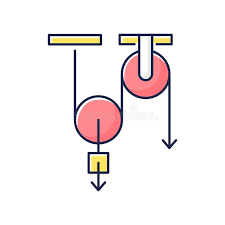
E3-Energy
The ability of human beings to use various forms of energy is one of the greatest developments in human history. Electrical energy brings cities to life. Modern transportation powered by energy links peoples together. Modern society is geared to using electricity as a main energy source. There are many reasons why electricity is the most common energy source used at home and in the office. This elective topic begins by reviewing domestic appliances for lighting, cooking and air-conditioning. These appliances show how physics principles are used to make our homes better and more comfortable places to live in.
Students investigate the total amount of energy transferred when these appliances are in operation. They also learn how to calculate the cost from power rating of the appliances. The idea of energy changes being associated with energy transfer is raised, and students identify the energy changes associated with a range of appliances. This leads into the introduction of the Energy Efficiency Labelling Scheme informing the public to choose energy-efficient household appliances for saving energy. Building and transportation provide situations for students to study the factors affecting energy performance in real contexts. Building materials provide the starting point for discussion of the thermal properties of different materials to transfer energy; and this leads to consideration of a building design to minimise energy use and provide an appropriate internal environment without sacrificing its quality. Through the use of electric motors as energy converters in vehicles, students study the efficiency of electric motors compared to internal combustion engines, in the attempt to reduce air pollution.
There are many energy sources used as fuel that can be converted into electricity. The current fuels used for generating electricity in Hong Kong include coal, petroleum, natural gas, nuclear fuel and pump storage. Students compare the efficiency of different fuels and different ways of using the same fuel. Through a consideration of the design features of a solar cooker, students investigate conduction, convection and radiation as means of transferring energy from nature. Different sources of energy have different environmental effects on society. When fossil fuels burn, a large amount of pollutants are discharged into the air.
The pollutants cause atmospheric pollution, reduce air quality and contribute to the greenhouse effect which may warm and damage the Earth. Whereas nuclear power stations are very efficient, the disposal of dangerous radioactive waste materials continues to be a problem. The growing concern about the environmental impact of energy polluting the environment has made environmentally friendly and alternative energy sources worth considering. In this connection, emphasis is placed on the energy conservation principle, to encourage efficient energy usage in order to maintain and improve the quality of the environment. Energy efficiency can be described simply using an input-output model. For example, a solar cell can be understood generally as a transducer that has the solar radiation as input and a useful form of electrical energy as the output. Despite the fact that Hong Kong has no indigenous energy sources, solar cells and wind power are introduced as local contextual examples to illustrate the concept of renewable energy sources. This elective topic increases students’ understanding of the application of physics, the uses of different energy sources and the implications of energy efficiency to the environment.
What are you waiting for?
Let's contact our tutor Ben Sir
 DSE Ben Sir
DSE Ben Sir